Abstract
1. The movement of fluorescein across the retinal surface of the rabbit's eye was estimated by measuring the concentration gradient of the dye in the vitreous body. These measurements were made in vivo by means of a slit-lamp fluorophotometer, or were taken from frozen sections of enucleated eyes.
2. In the normal eye, fluorescein does not pass from the blood to the vitreous body across any part of the retina. When injected into the vitreous body it passes rapidly out across the entire retinal surface, even against a very large concentration gradient.
3. A variety of metabolic and competitive inhibitors, effective in blocking organic anion transport in the kidney and liver, tend to abolish this unidirectional movement of fluorescein across the retina.
4. The region occupied by the retinal vessels is more sensitive to inhibition than other areas of the retina. Occlusion of the vessels by diathermy prevents the exchange of fluorescein in this region.
5. It appears, then, that there is an active transport of organic anions out of the vitreous body, both by the retinal capillaries and by the retina itself. The latter system is probably located in the pigment epithelium and seems to be carried forward to the rear surface of the iris.
6. Since the walls of the retinal vessels of the rabbit are freely in contact with the vitreous body, the active transport must take place across the capillary endothelial cells themselves. These vessels have structural and permeability characteristics found only in the central nervous system and it is to be presumed that the anion transport system is shared by the capillaries of the brain.
7. The function of the transport in the retina may be to protect the nervous tissue from toxic materials by preventing their entry from the blood or by removing products of metabolism conjugated as organic anions. Alternatively, the mechanism may be concerned in maintaining the normal adhesion of the retina to the choroid, since retinal detachment was observed to follow its total inhibition.
Full text
PDF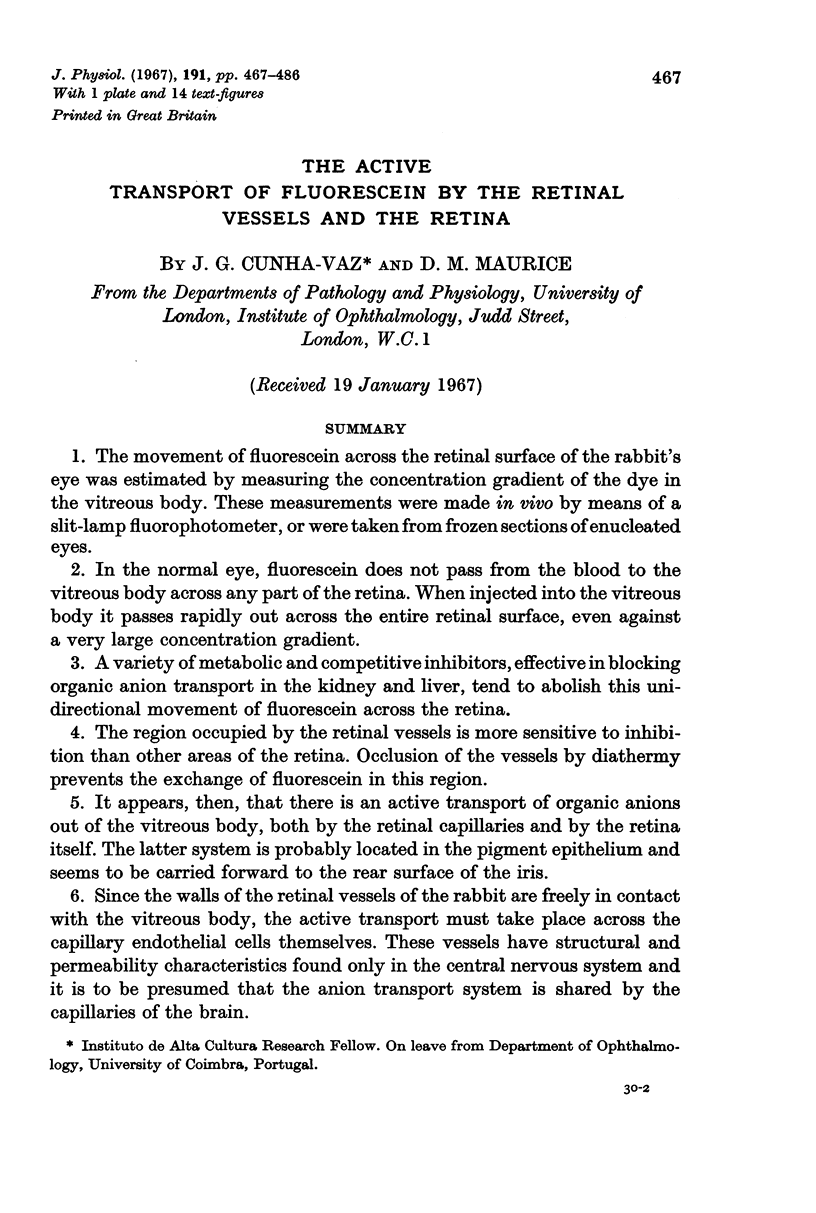
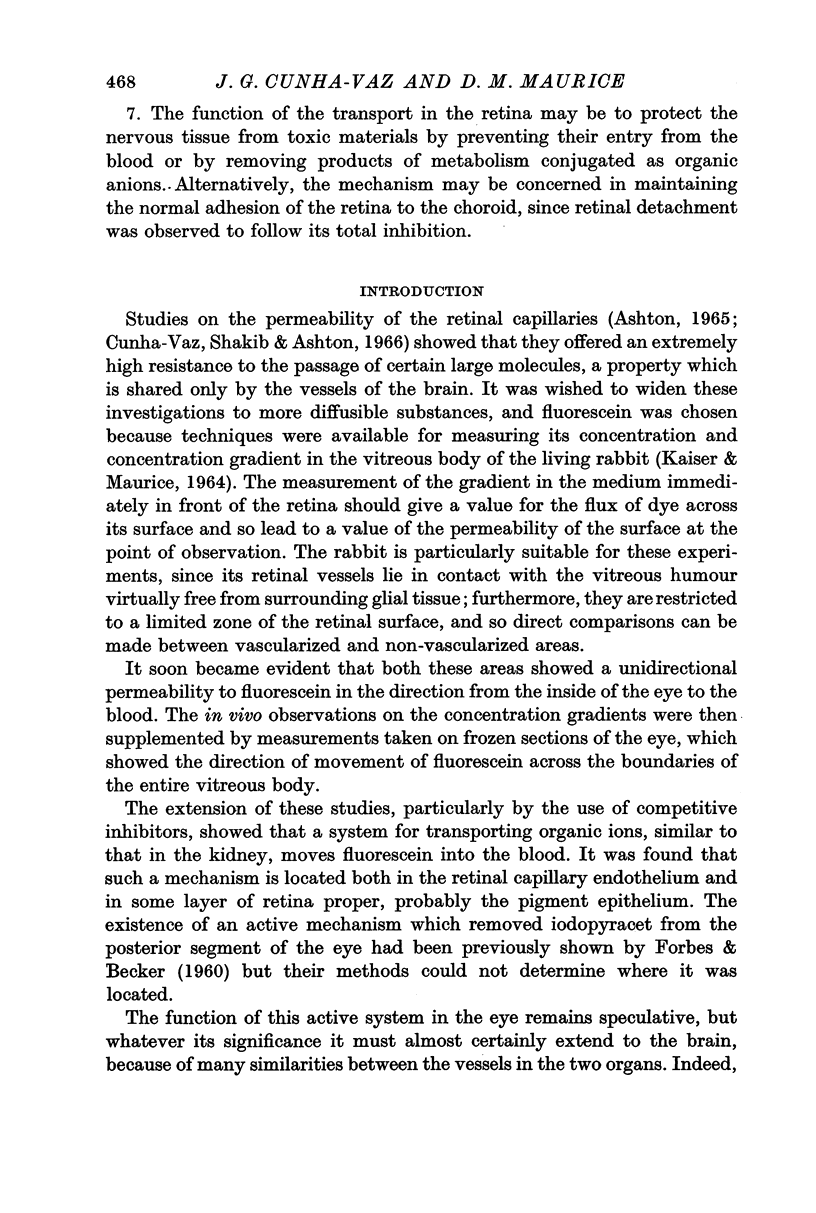
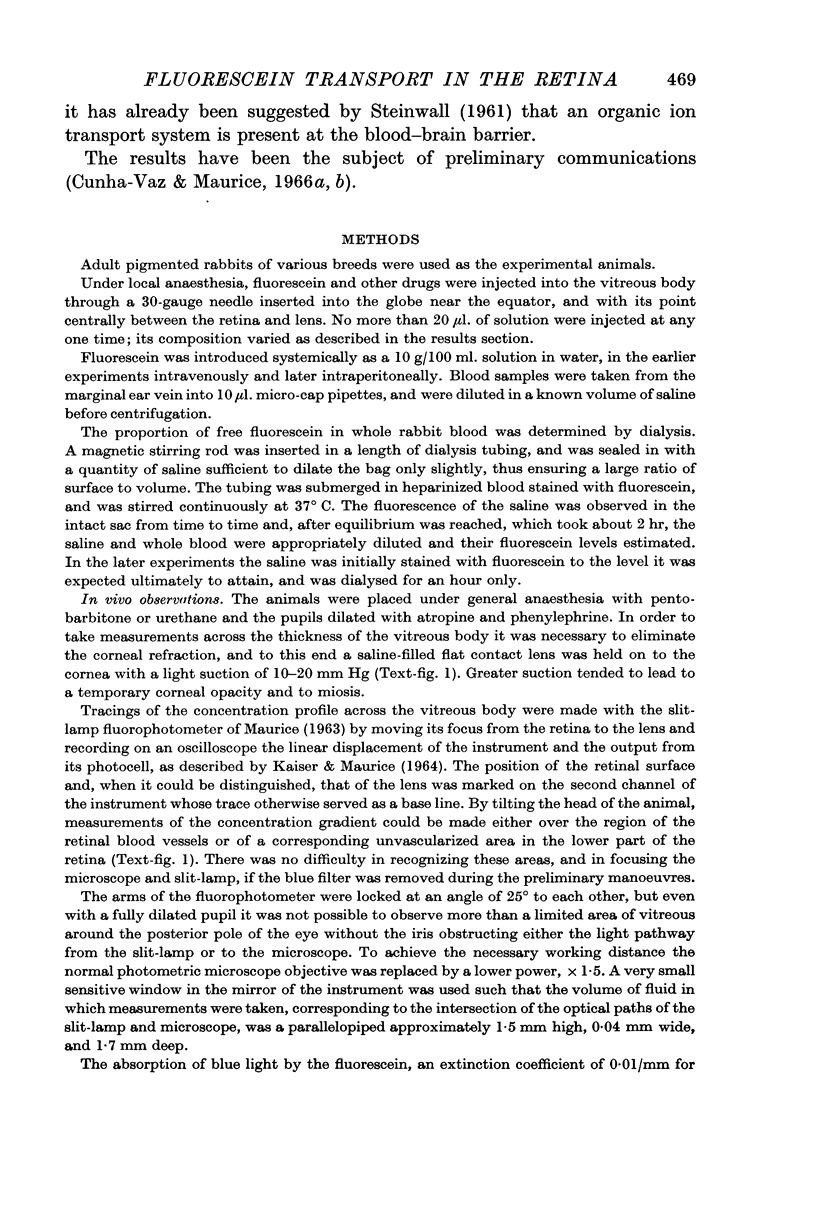
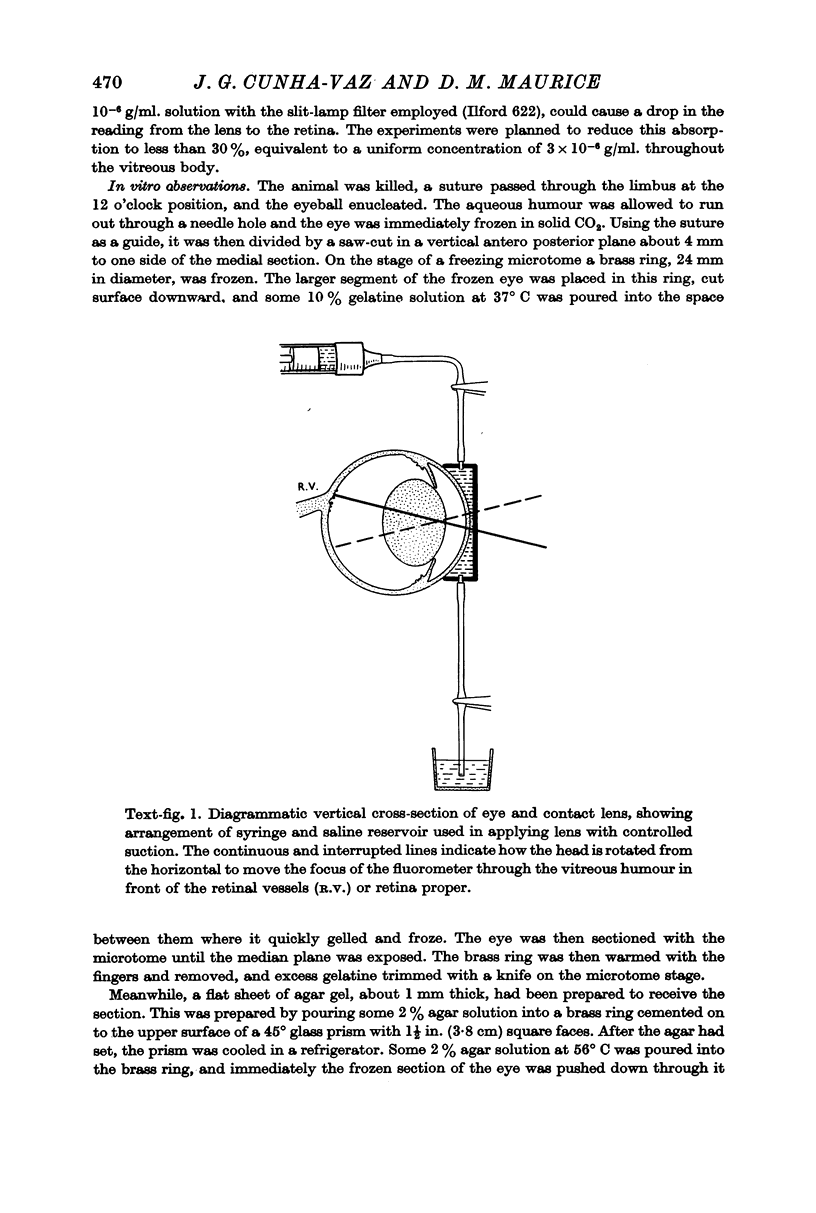
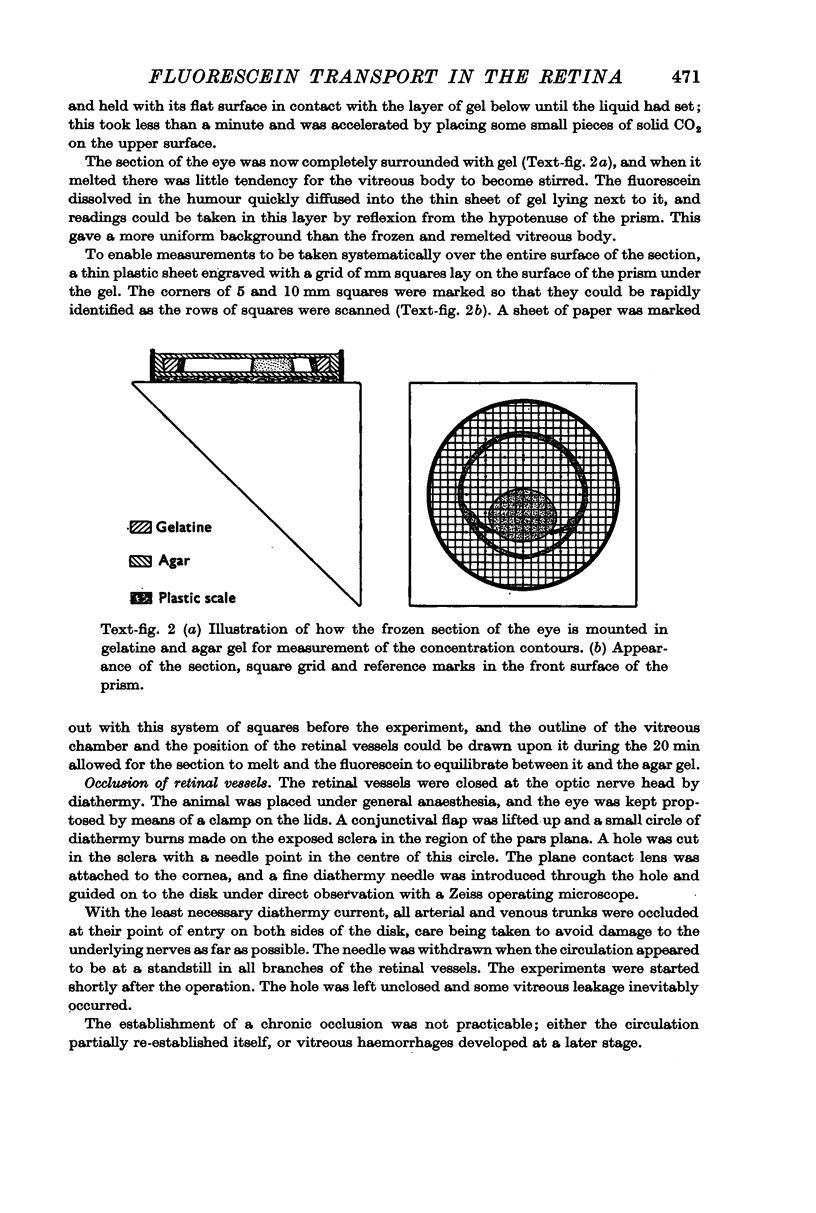
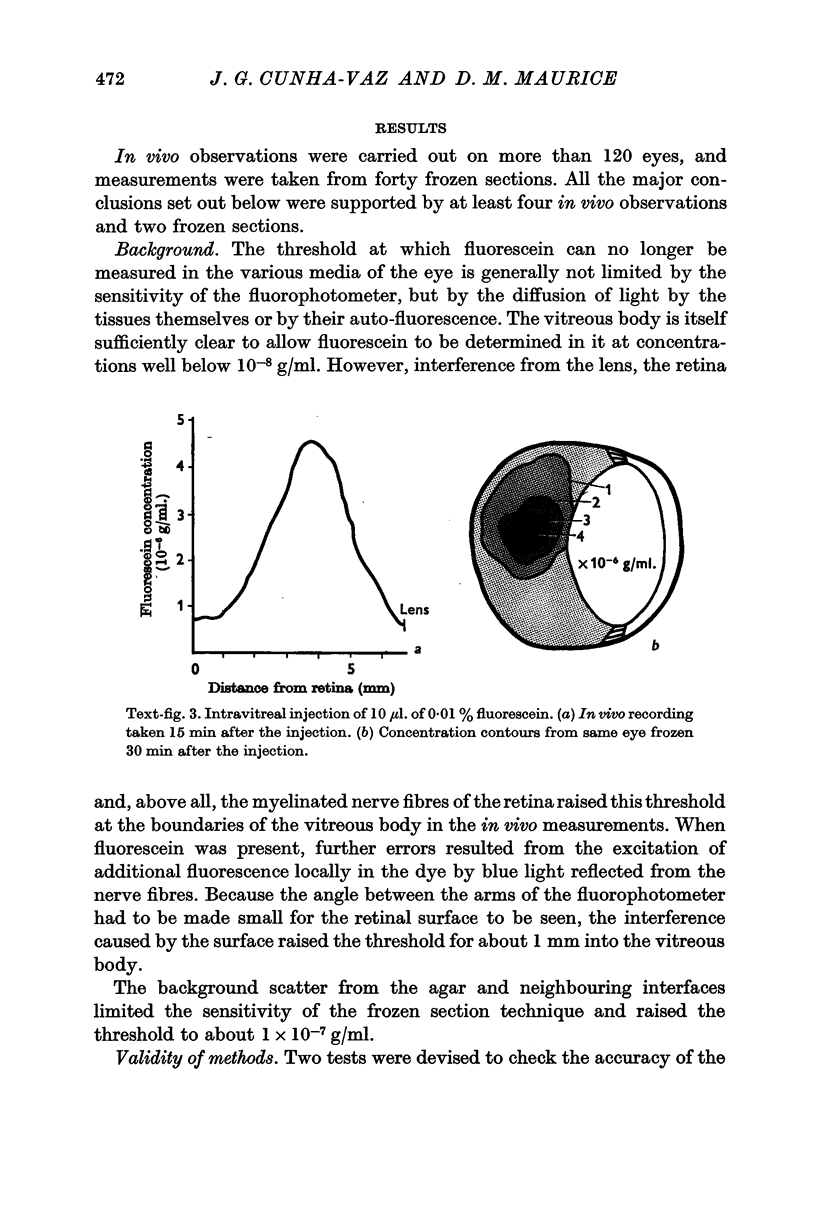
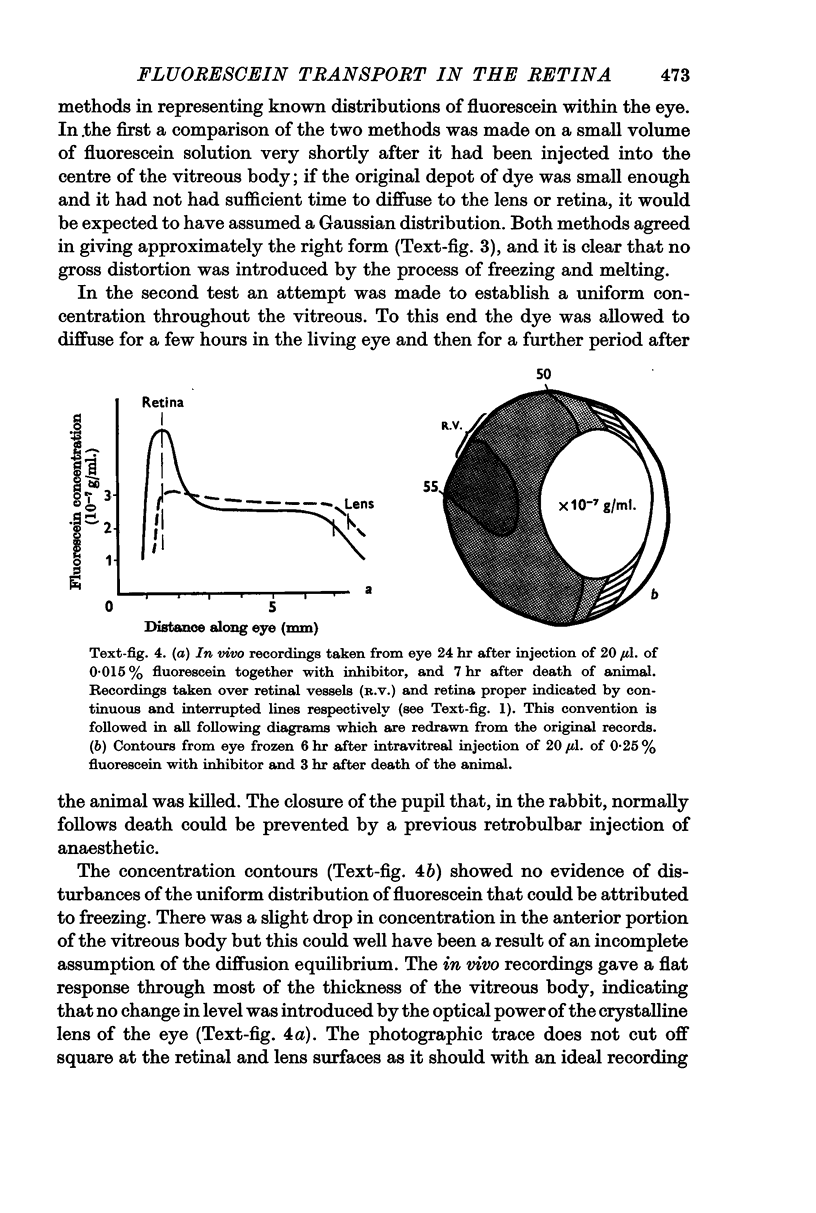
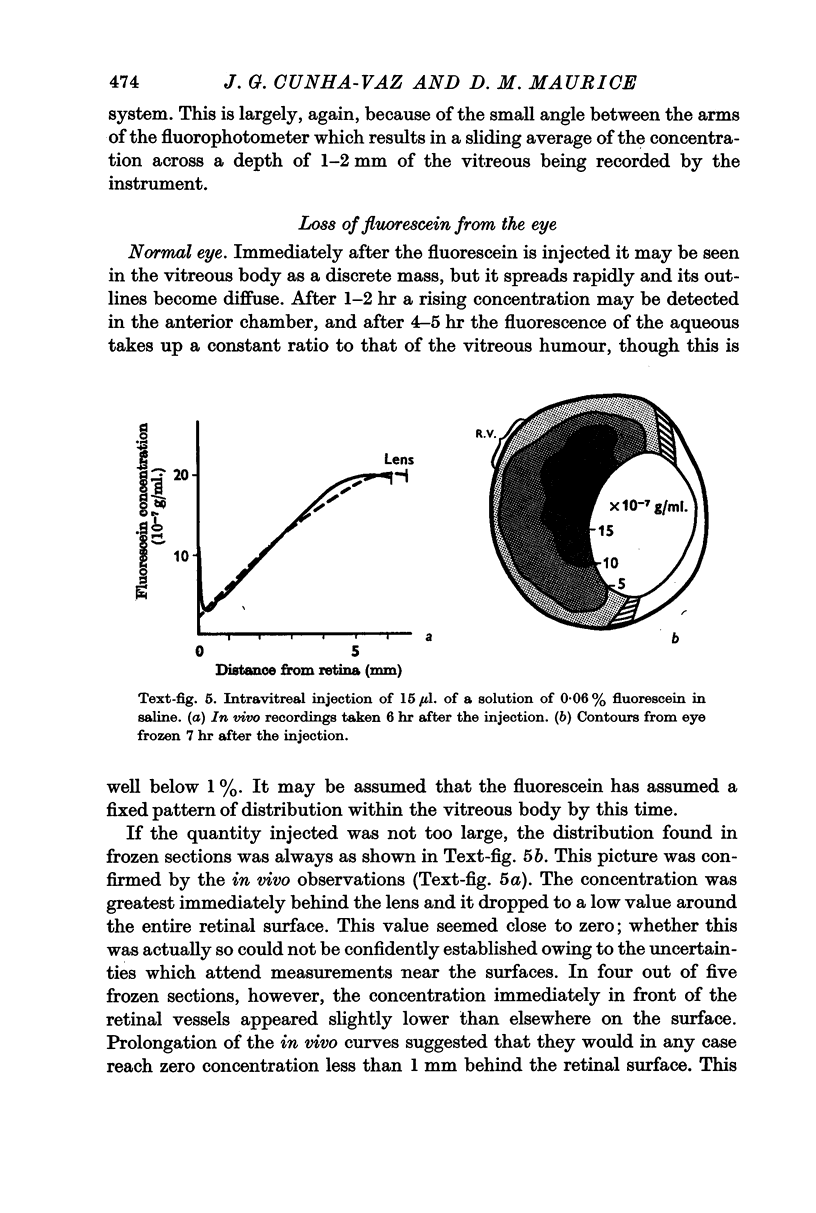
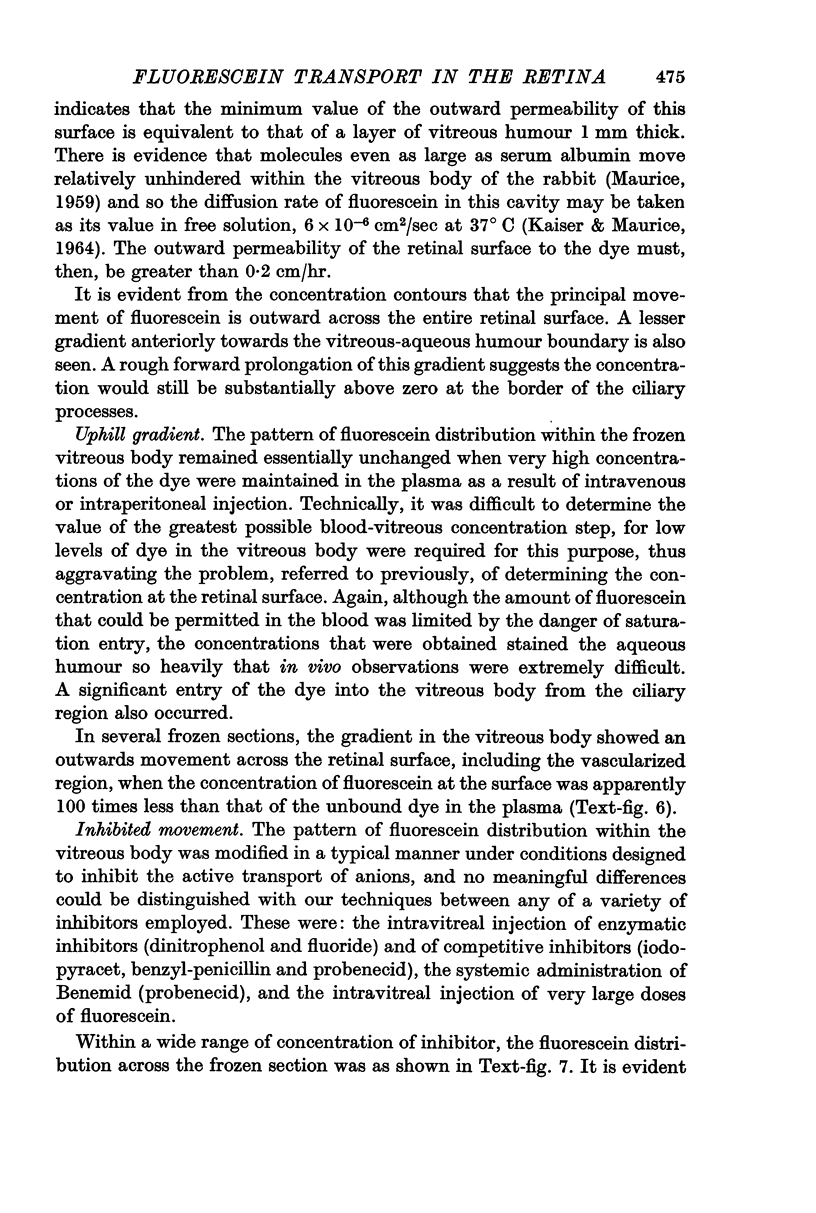
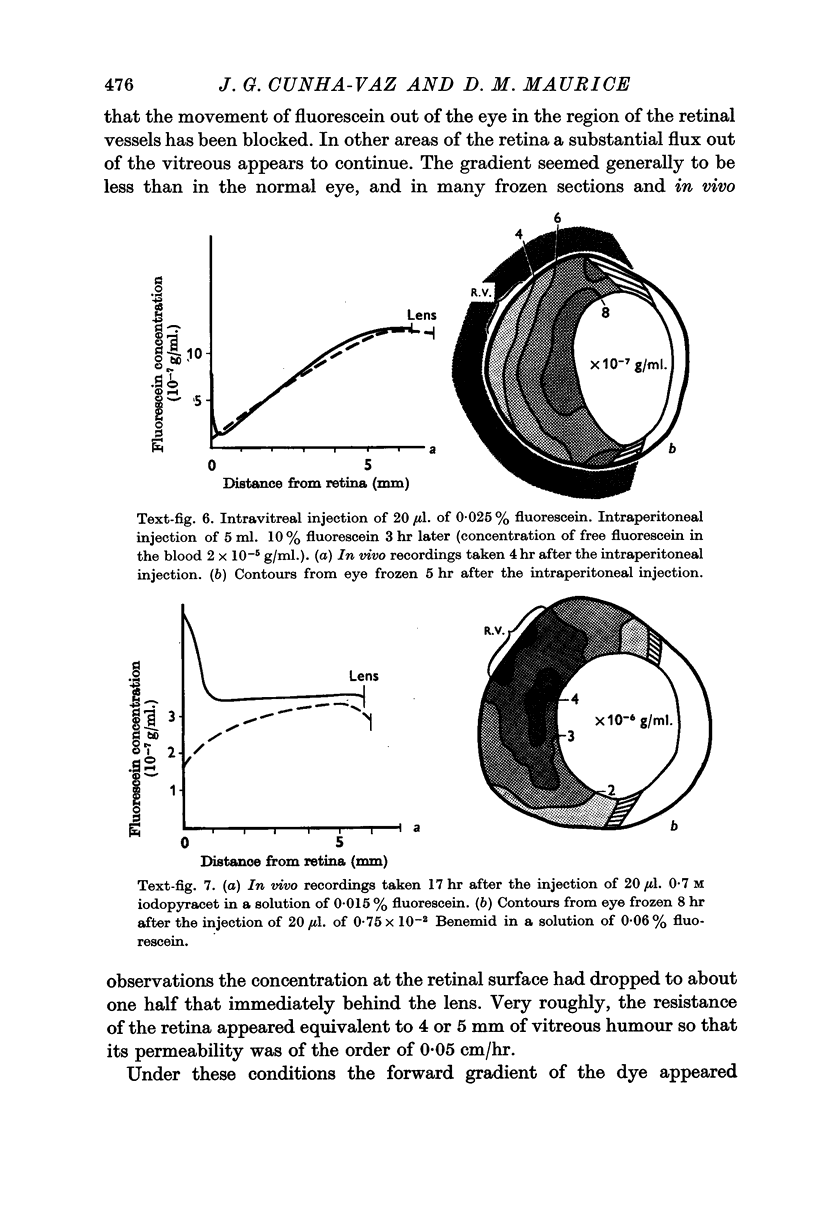
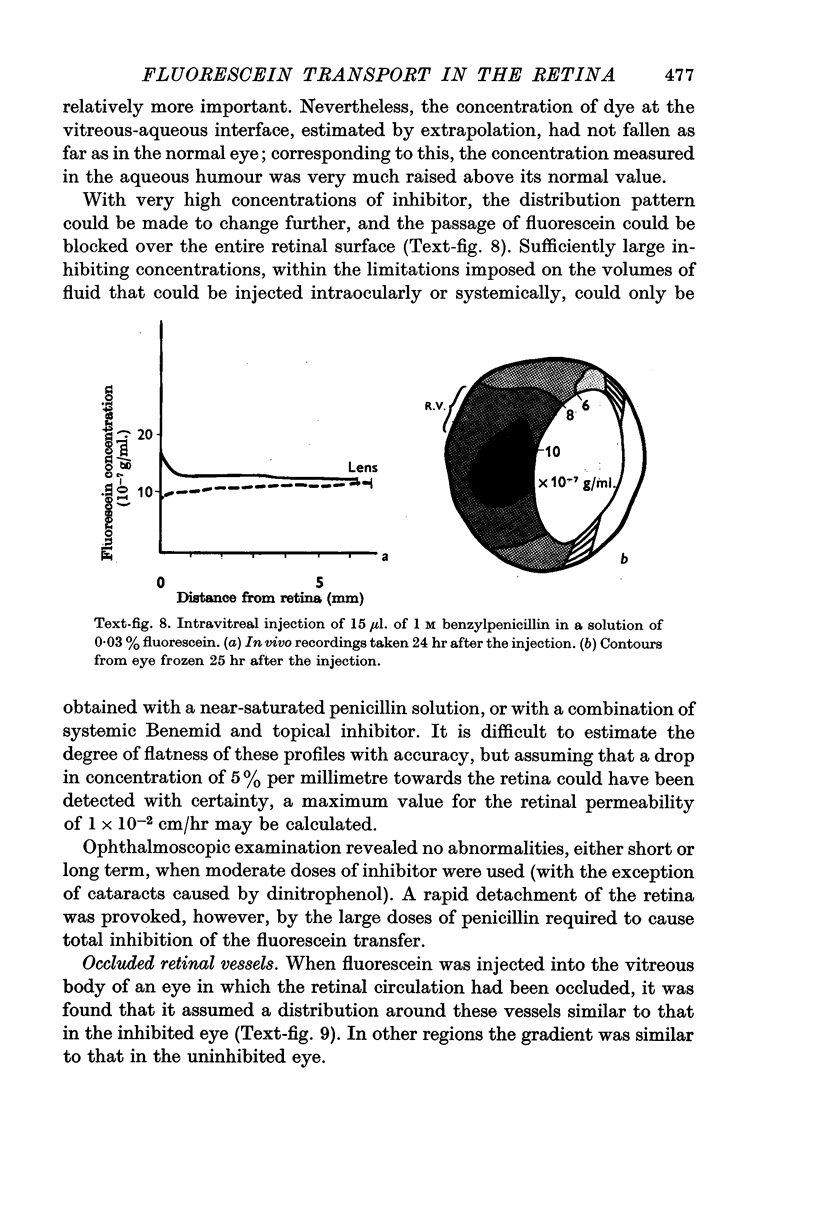
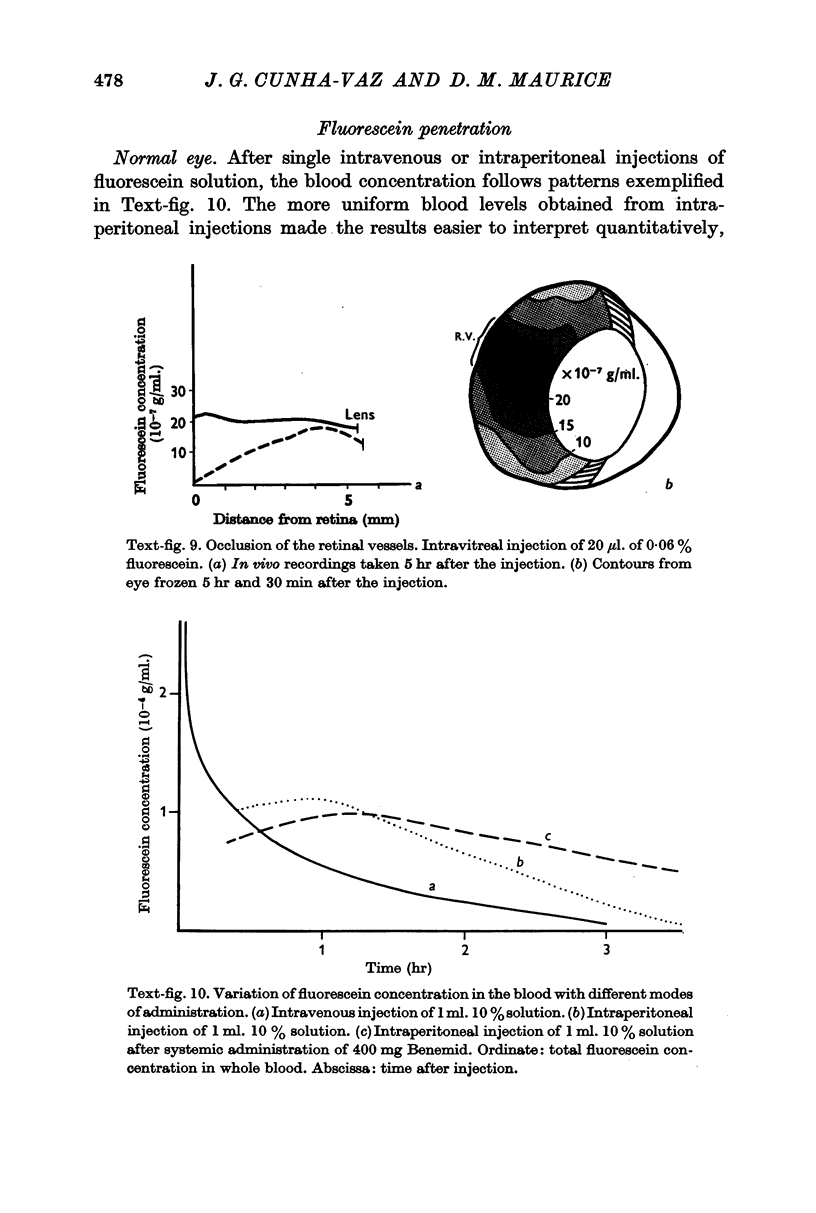
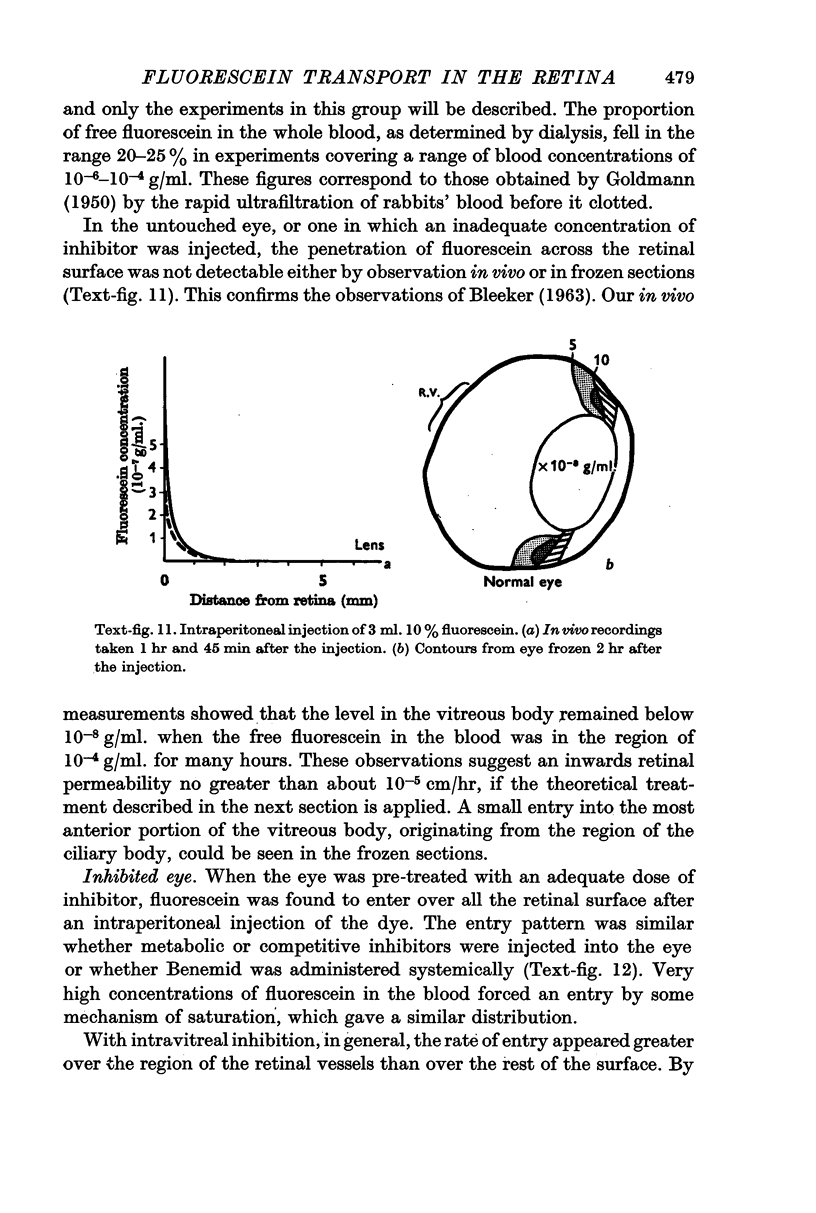
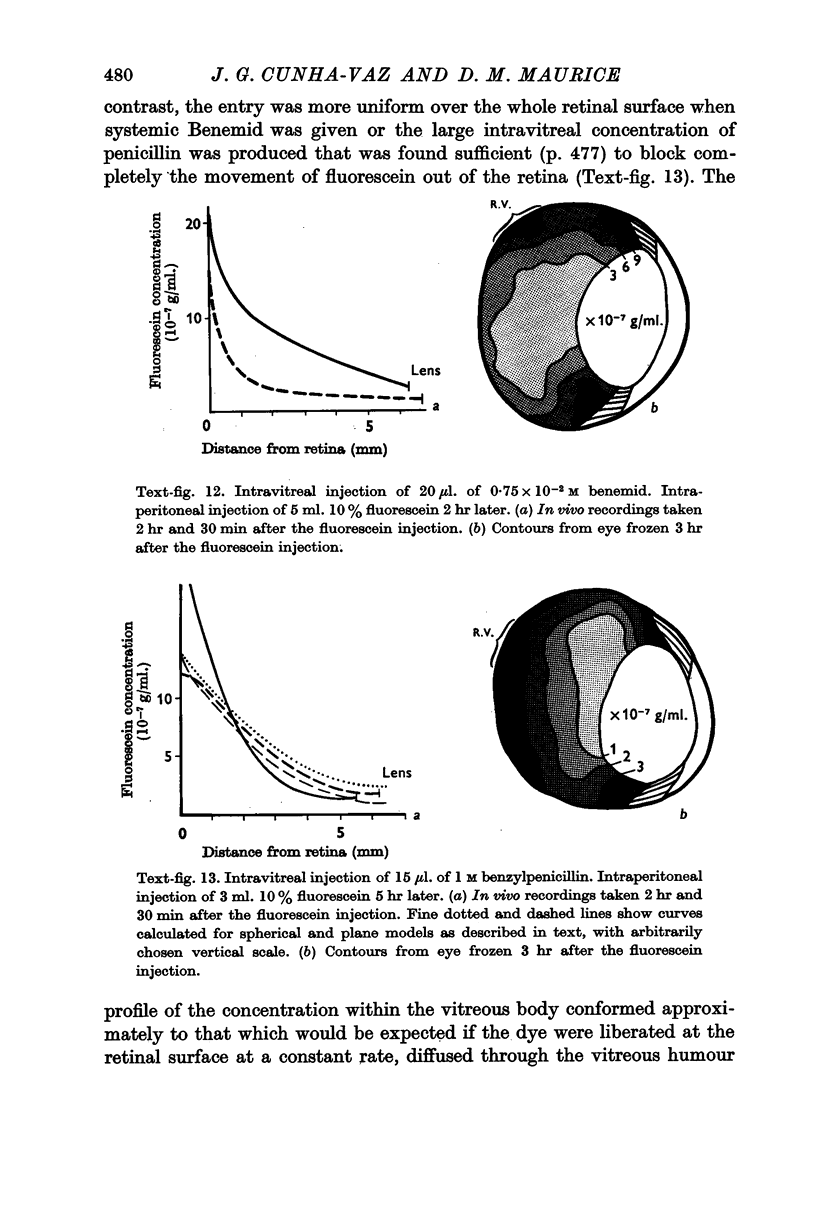
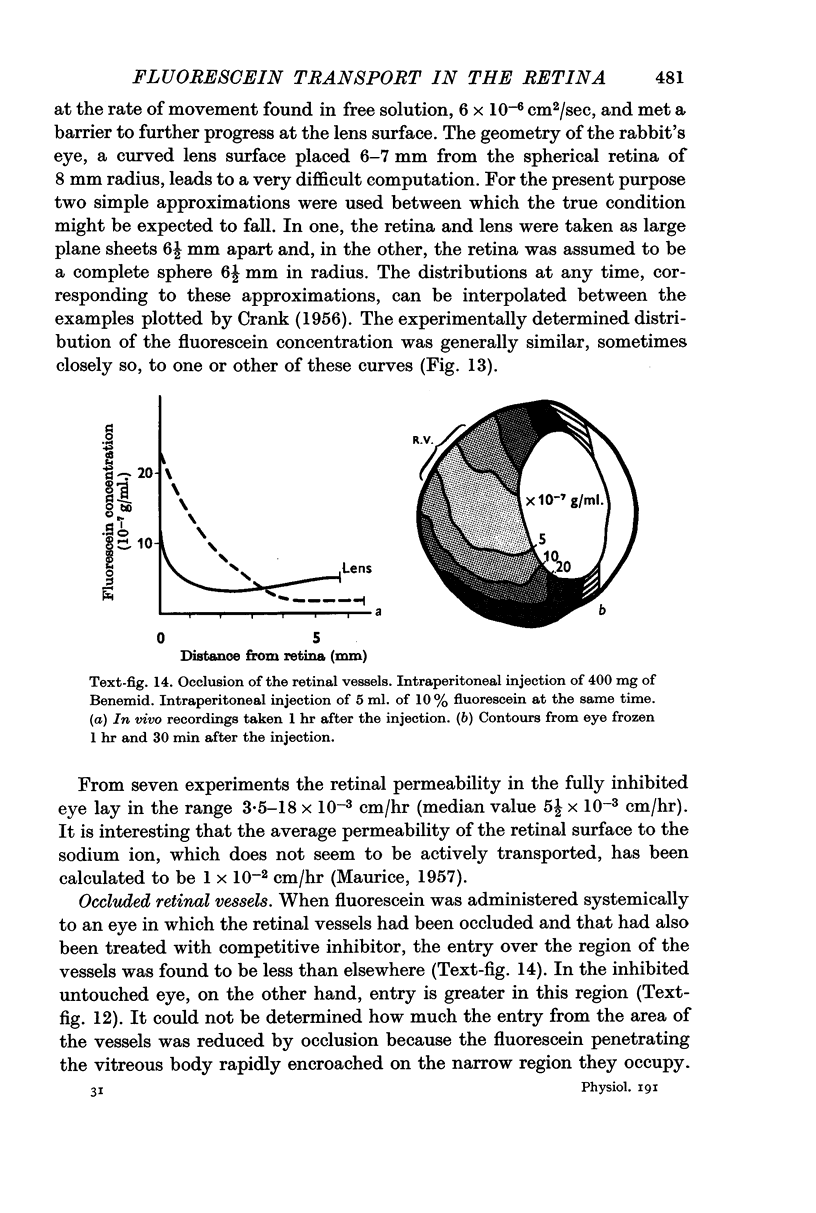
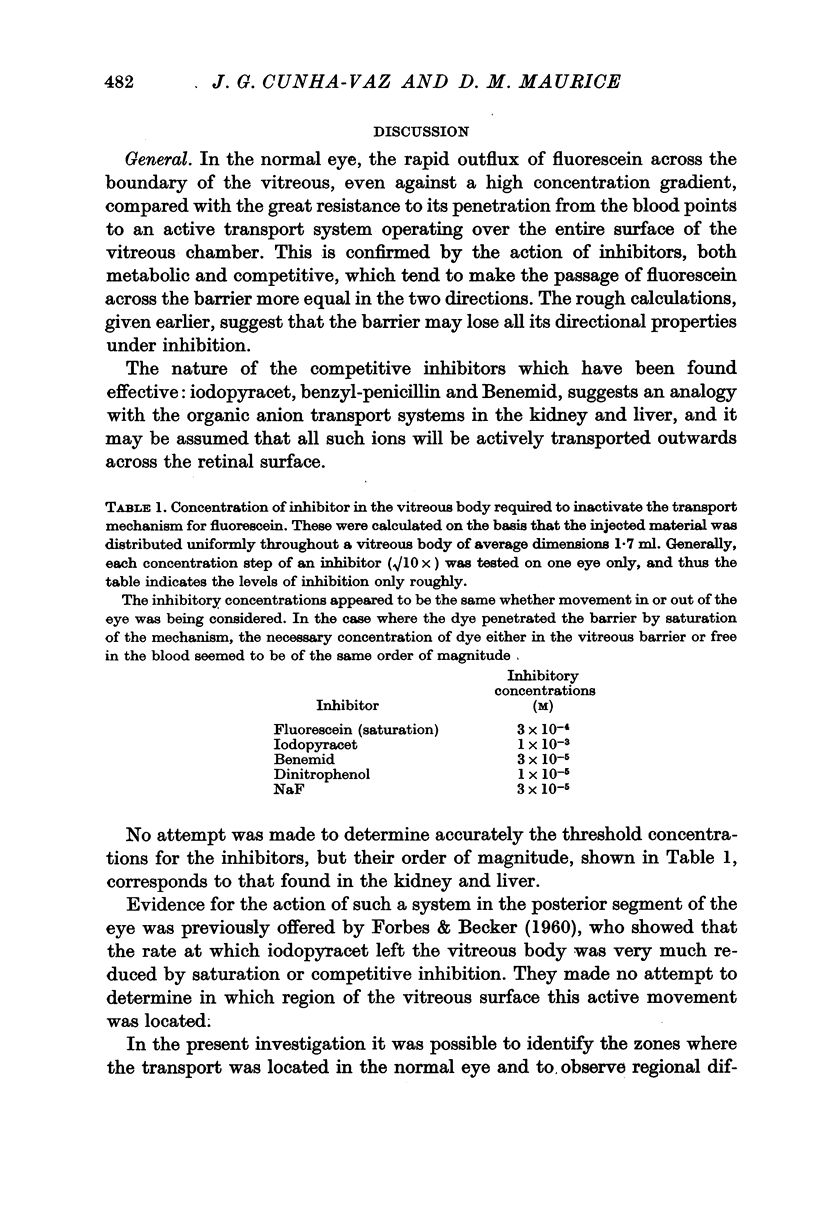
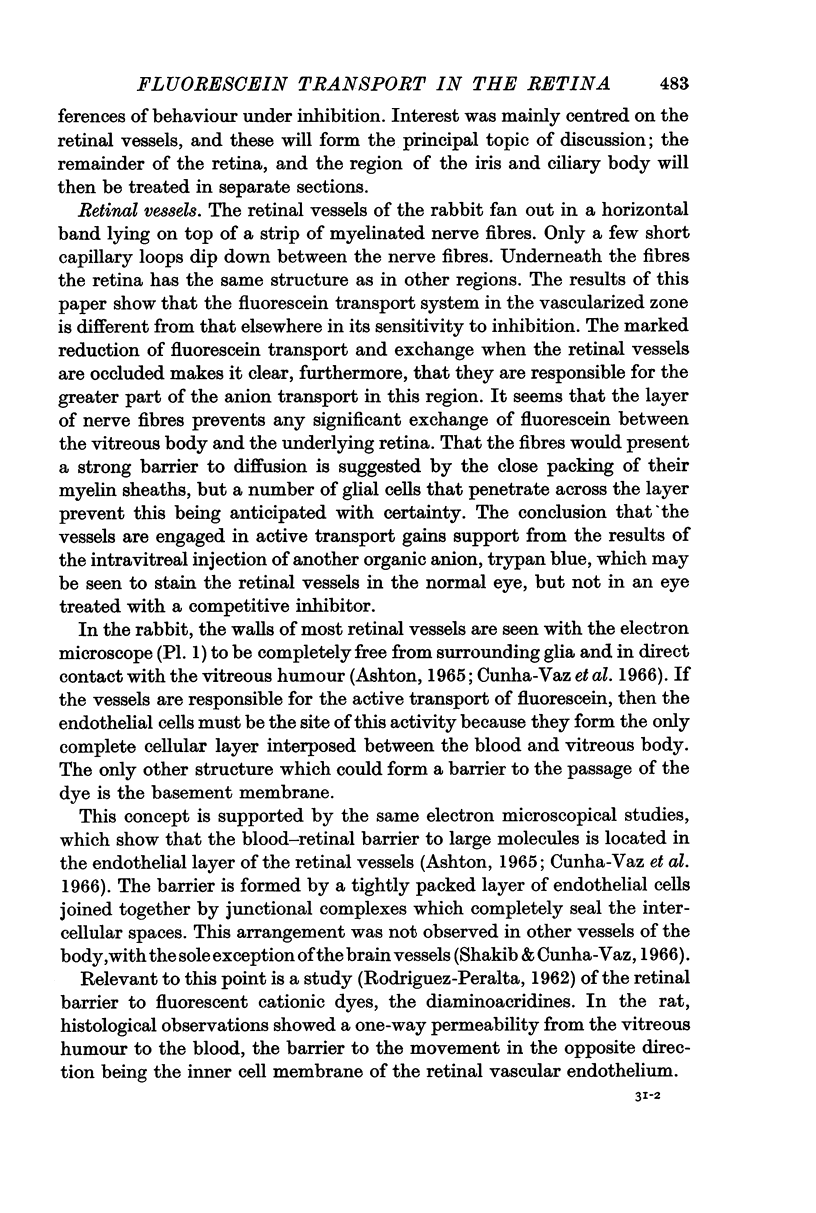
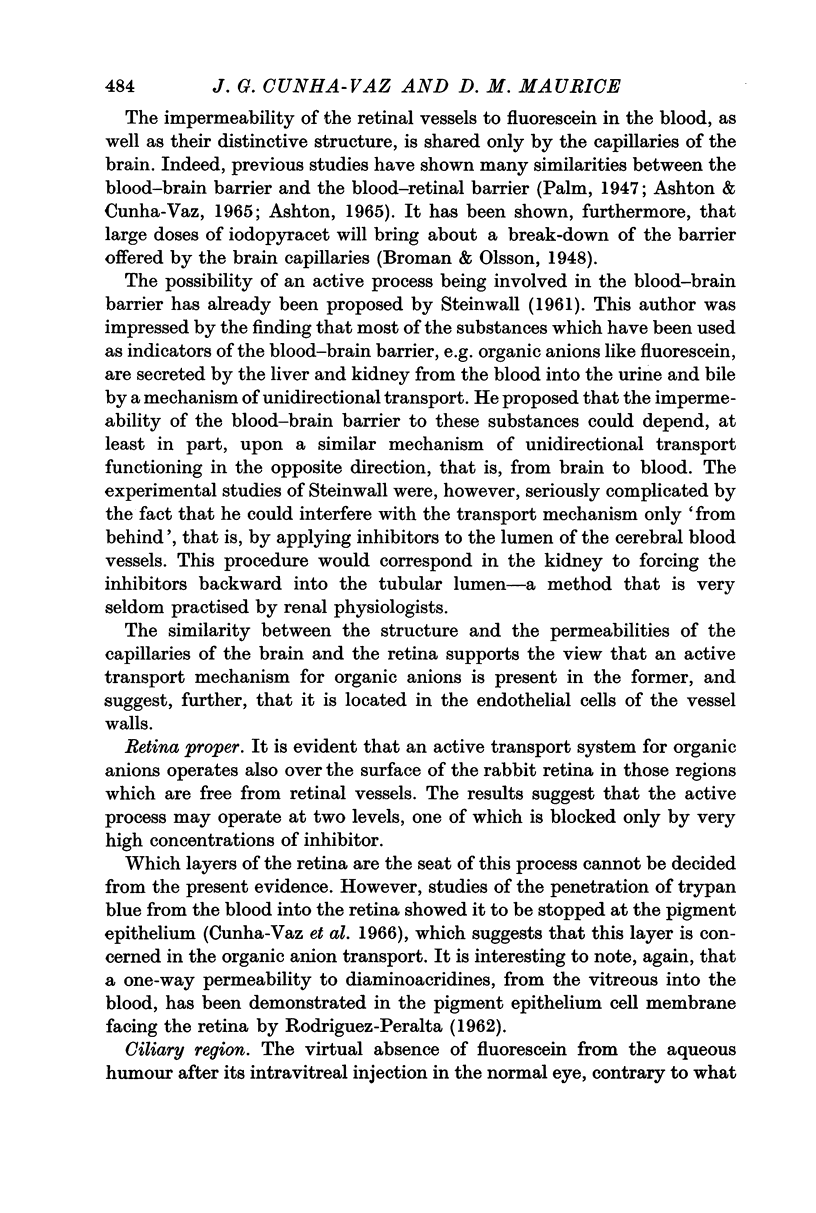

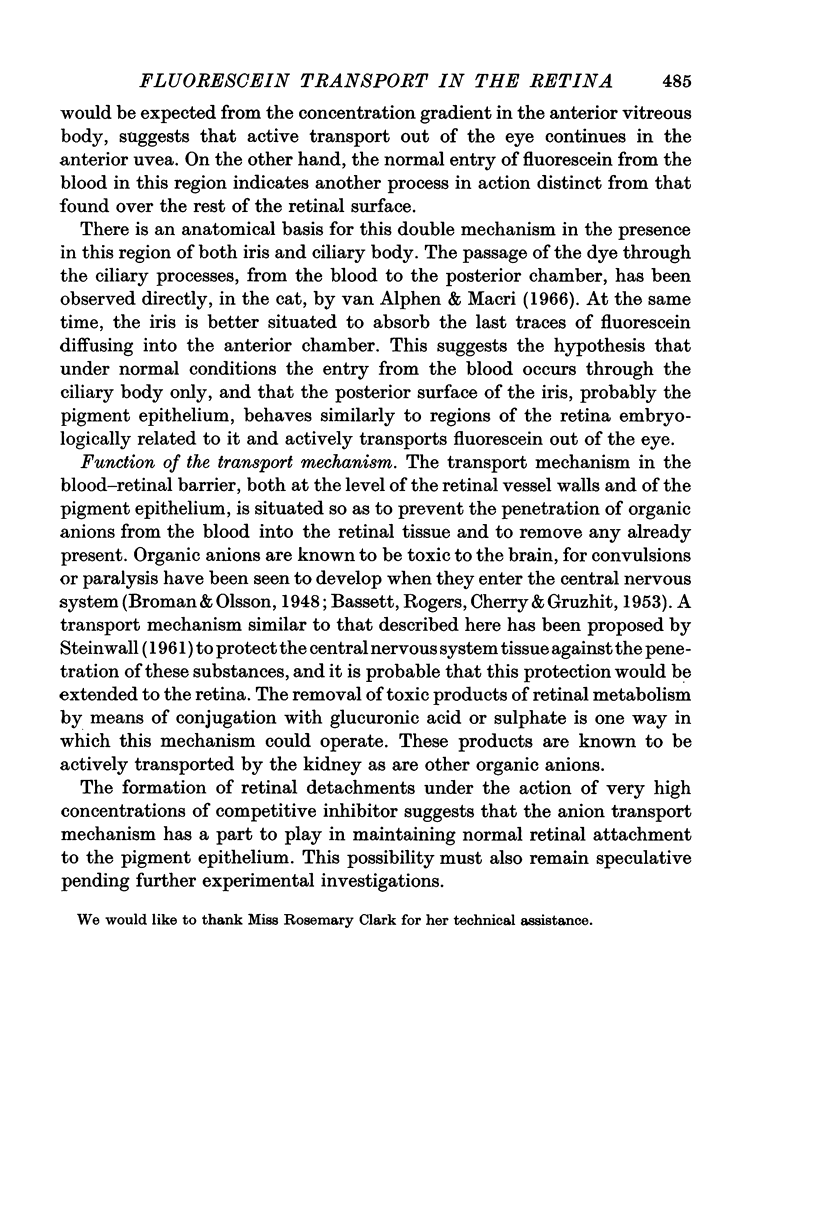
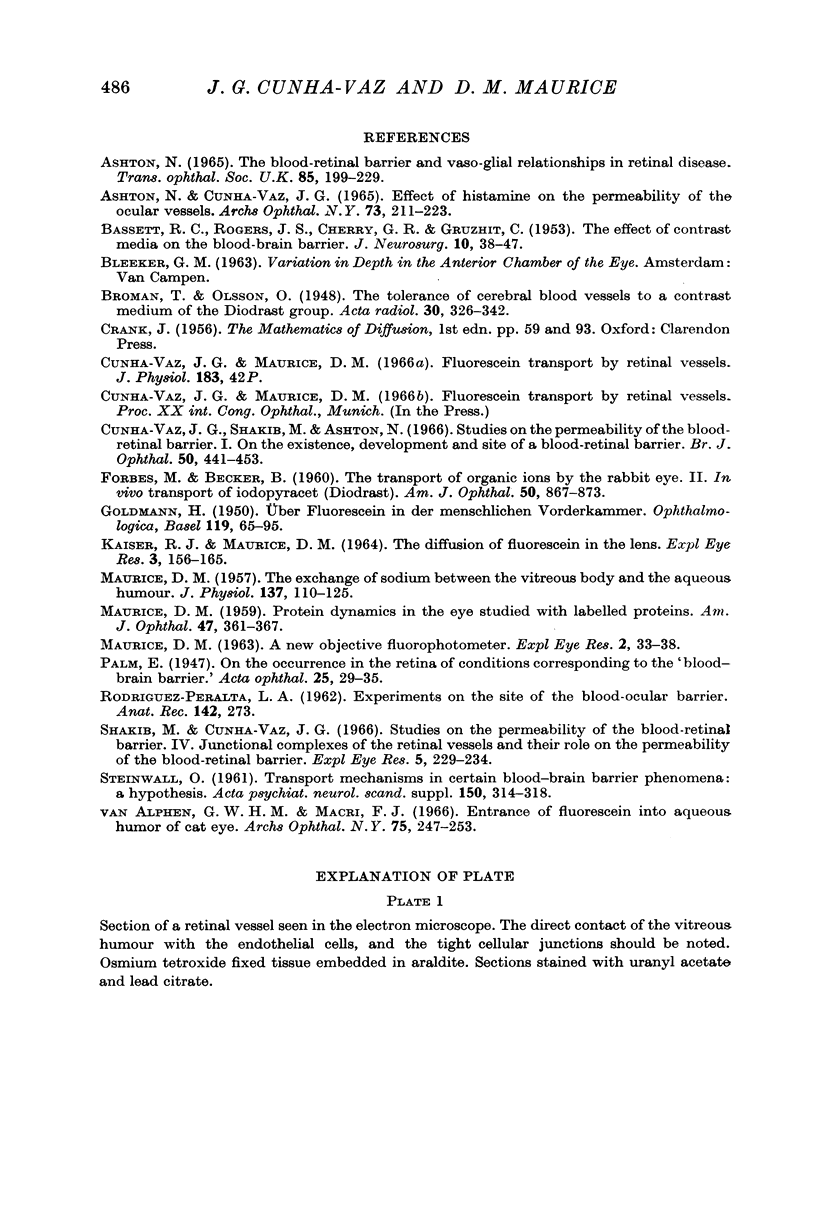
Images in this article
Selected References
These references are in PubMed. This may not be the complete list of references from this article.
- ASHTON N., CUNHA-VAZ J. G. EFFECT OF HISTAMINE ON THE PERMEABILITY OF THE OCULAR VESSELS. Arch Ophthalmol. 1965 Feb;73:211–223. doi: 10.1001/archopht.1965.00970030213014. [DOI] [PubMed] [Google Scholar]
- Ashton N. Bowman lecture. The blood-retinal barrier and vaso-glial relationships in retinal disease. Trans Ophthalmol Soc U K. 1965;85:199–230. [PubMed] [Google Scholar]
- BASSETT R. C., ROGERS J. S., CHERRY G. R., CRUZHIT C. The effect of contrast media on the blood-brain-barrier. J Neurosurg. 1953 Jan;10(1):38–47. doi: 10.3171/jns.1953.10.1.0038. [DOI] [PubMed] [Google Scholar]
- Cunha-Vaz J. G., Shakib M., Ashton N. Studies on the permeability of the blood-retinal barrier. I. On the existence, development, and site of a blood-retinal barrier. Br J Ophthalmol. 1966 Aug;50(8):441–453. doi: 10.1136/bjo.50.8.441. [DOI] [PMC free article] [PubMed] [Google Scholar]
- FORBES M., BECKER B. The transport of organic anions by the rabbit eye. II. In vivo transport of iodopyracet (Diodrast). Am J Ophthalmol. 1960 Nov;50:867–875. doi: 10.1016/0002-9394(60)90339-1. [DOI] [PubMed] [Google Scholar]
- KAISER R. J., MAURICE D. M. THE DIFFUSION OF FLUORESCEIN IN THE LENS. Exp Eye Res. 1964 Jun;3:156–165. doi: 10.1016/s0014-4835(64)80030-0. [DOI] [PubMed] [Google Scholar]
- MAURICE D. M. Protein dynamics in the eye studied with labelled proteins. Am J Ophthalmol. 1959 Jan;47(1 Pt 2):361–368. doi: 10.1016/s0002-9394(14)78042-0. [DOI] [PubMed] [Google Scholar]
- MAURICE D. M. The exchange of sodium between the vitreous body and the blood and aqueous humour. J Physiol. 1957 Jun 18;137(1):110–125. doi: 10.1113/jphysiol.1957.sp005800. [DOI] [PMC free article] [PubMed] [Google Scholar]
- Shakib M., Cunha-Vaz J. G. Studies on the permeability of the blood-retinal barrier. IV. Junctional complexes of the retinal vessels and their role in the permeability of the blood-retinal barrier. Exp Eye Res. 1966 Jul;5(3):229–234. doi: 10.1016/s0014-4835(66)80011-8. [DOI] [PubMed] [Google Scholar]
- Van Alphen G. W., Macri F. J. Entrance of fluorescein into aqueous humor of cat eye. Arch Ophthalmol. 1966 Feb;75(2):247–253. doi: 10.1001/archopht.1966.00970050249019. [DOI] [PubMed] [Google Scholar]



